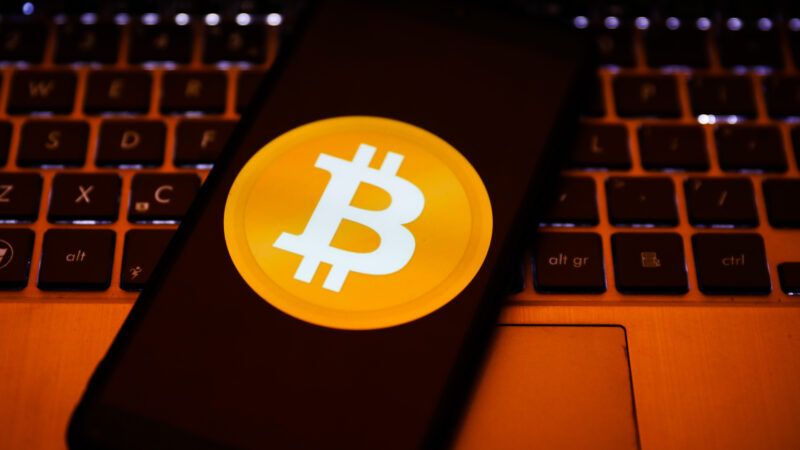Why Does the CFPB Want To Protect Teens From Cryptocurrencies?
Rather than let students weigh crypto costs and benefits on their own, the Consumer Financial Protection Bureau claims to know best.

For the past few years, the Consumer Financial Protection Bureau (CFPB) has published financial literacy activities for K-12 educators. These materials examine traditional personal finance subjects like loans, taxes, and saving habits. And as cryptocurrencies have become more popular, the CFPB has woven them into its educational roster, too—but only the parts that fit its agenda.
The resulting activity, "Wondering about virtual currencies," leans more toward advocacy than it does education. Apart from being self-serving (one reflection question asks students to "write a sentence describing why advisories such as this one are helpful to consumers"), it is overly critical of the current cryptocurrency space.
Cartoonish cautionary tales figure heavily in the activity's source text, the CFPB's "Risks to consumers posed by virtual currencies" advisory. "Nicole" lost all her bitcoin after using a corrupt bitcoin exchange. "James" discarded his private keys and could no longer access his bitcoin holdings. "Kat" and "Larry" lost thousands when their hosted wallet companies wouldn't help recover stolen bitcoin. Other risks mentioned range from mildly annoying to truly awful. For all these downsides, there's little mention of the benefits of cryptocurrencies.
Plenty has changed since August 2014, when the advisory was last updated. Bitcoin is now trading at about $37,000 after hitting a record high above $63,000 this past April, compared to an August 2014 price of roughly $500. Ethereum, the second-largest cryptocurrency, did not exist when the CFPB released the advisory. In the last five years, its price has risen from $12.70 to $2,744.52.
The classroom activity warns that few retailers accept virtual currencies as payment and implies that they aren't widely used. But these days, over 15,000 businesses accept bitcoin, and the currency is used in over 300,000 transactions daily. Some 46 million Americans—17 percent of the adult population—now own bitcoin, according to a study conducted by the New York Digital Investment Group. That doesn't even account for the thousands of other cryptocurrencies.
Still, theft and fraud are common risks according to the CFPB activity. It's true that cryptocurrencies are not legally protected the way government-backed assets are. But "theft of bitcoin from unsuspecting wallets has almost completely disappeared," according to Bitcoin Magazine. Just 0.002 percent of the bitcoin supply was stolen in 2020—a 92 percent drop from 2019. If those odds are still too high, cautious holders can keep virtual assets in "cold storage" wallets, which are offline and more secure.
Try as it might, the CFPB has not deterred investors. Crypto buyers either haven't seen the agency's warnings, or they have and simply don't care. Whichever is true, the CFPB's efforts to scare high school students away from crypto investments are misguided. Young people are already capitalizing on their curiosity: Nearly one in 10 American teenagers has traded crypto assets, according to financial services company Piper Sandler. Over a quarter of Gen Z and millennials prefer bitcoin over stocks as of 2019.
This activity's sole purpose is to "make [students] aware of the potential risks of investing in virtual currency," even though the agency's "Investigating investing" guide asks students to consider the benefits of various investment products in addition to the costs. To the CFPB, virtual currencies are the only asset class worthy of such high scrutiny. ("That's because [other asset classes] are insured by the federal government.")
Lack of government involvement is often why people choose to invest in cryptocurrencies in the first place. In the face of rising inflation, they're hedges against a weakening U.S. dollar. Inflation also renders investment vehicles that the CFPB encourages students to consider—like government-backed bonds—less lucrative. It shouldn't be any wonder that people are seeking nongovernmental solutions.
Besides, young people can benefit from cryptocurrencies. Some college students are footing their tuition bills thanks to their crypto investments. The CFPB should empower students to weigh costs and benefits on their own—a seemingly obvious component of the very financial literacy it aims to teach.
Show Comments (50)